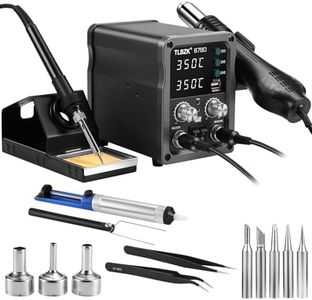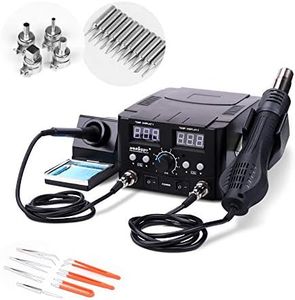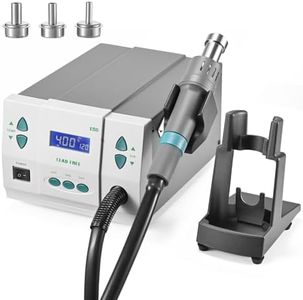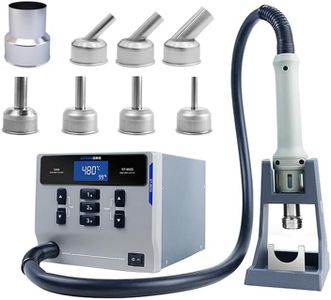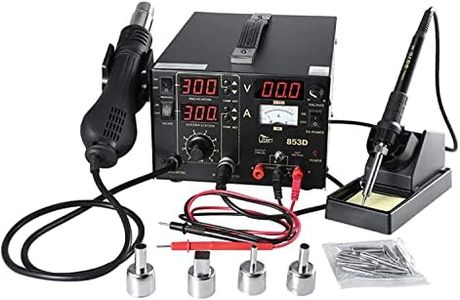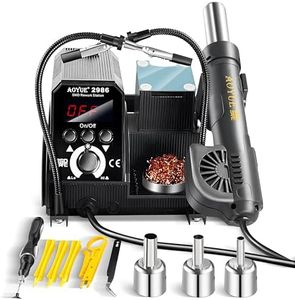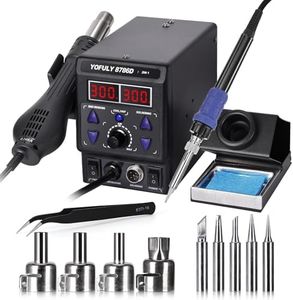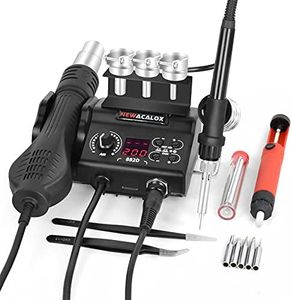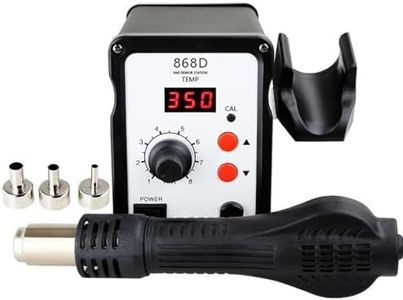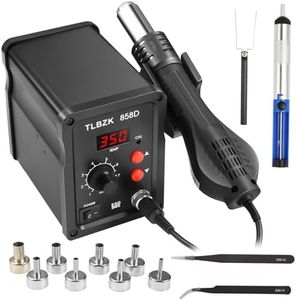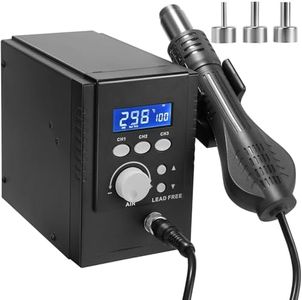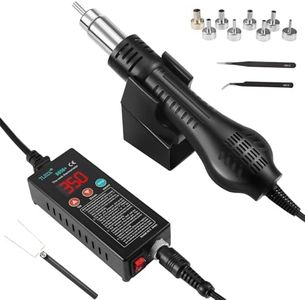We Use CookiesWe use cookies to enhance the security, performance,
functionality and for analytical and promotional activities. By continuing to browse this site you
are agreeing to our privacy policy
10 Best Hot Air Rework Stations
From leading brands and best sellers available on the web.Buying Guide for the Best Hot Air Rework Stations
Choosing a hot-air rework station can make a significant difference if you work with electronics, especially for soldering or desoldering small components like SMDs (surface-mounted devices). It's a tool that uses controlled hot air to heat, remove, or reattach electronic components on circuit boards. Finding the right one is important for both safety and the quality of your work, so it's a good idea to understand the main features and how they relate to your needs.Airflow Type and ControlAirflow in a hot-air rework station is how the air is blown out—it can be either brushless fan or diaphragm pump based. Brushless fan types are quieter and have more consistent, smooth airflow, while diaphragm pumps are noisier but sometimes more focused. Adjustable airflow control lets you choose the right force—higher airflow helps with bigger components and fast jobs, but too much can blow away small parts; lower is gentler and safer for tiny, delicate pieces. Consider what kind of electronics you'll be working on: if you're doing a lot of miniature, small-scale work, gentle and controllable airflow is essential.
Temperature Range and StabilityTemperature range is how hot the air can get, often between 100°C and 500°C for most stations. Stability means the station can keep the temperature you set without big swings, which is crucial for not damaging delicate components. A wide temperature range is flexible for many jobs—higher for desoldering, lower for heat shrinking or delicate work. If you mostly handle small, heat-sensitive pieces, stable lower temperatures are key; for larger parts or heavy solder, you'll need higher temperatures.
Nozzle Types and SizesNozzles focus the hot air; stations typically come with several different shapes and diameters. Larger nozzles heat wide areas quickly, but can affect neighboring components, while narrower ones are for precise work in tight spaces. Consider your typical tasks: for dense circuit boards or precise SMD work, small interchangeable nozzles are ideal; for less detailed heating or larger parts, larger nozzles will save you time.
Display and ControlsThe display shows your settings clearly—like current temperature and airflow—while controls let you adjust them easily. Digital displays are easier to read accurately, while analog ones are simpler but less precise. If you want fast, repeatable settings and value accuracy, look for a model with an easy-to-read digital display and sensible controls, especially if you'll frequently switch between different jobs.
Safety FeaturesSafety features can include automatic cooling-down, sleep modes, and overheat protection. These prevent the tool from getting dangerously hot or staying on by accident, reducing risks to you and your electronics. If you’re new or might forget to switch things off, extra safety features add peace of mind and extend the life of your station.
Handle Ergonomics and StandA comfortable handle and a stable stand make the station safer and easier to use for long periods. Lightweight handles reduce fatigue, while a stable stand helps avoid accidents when the hot tool isn’t in your hand. If you expect to use your station often or for long sessions, look for one that feels comfortable and has a secure way to park the hot air gun.
